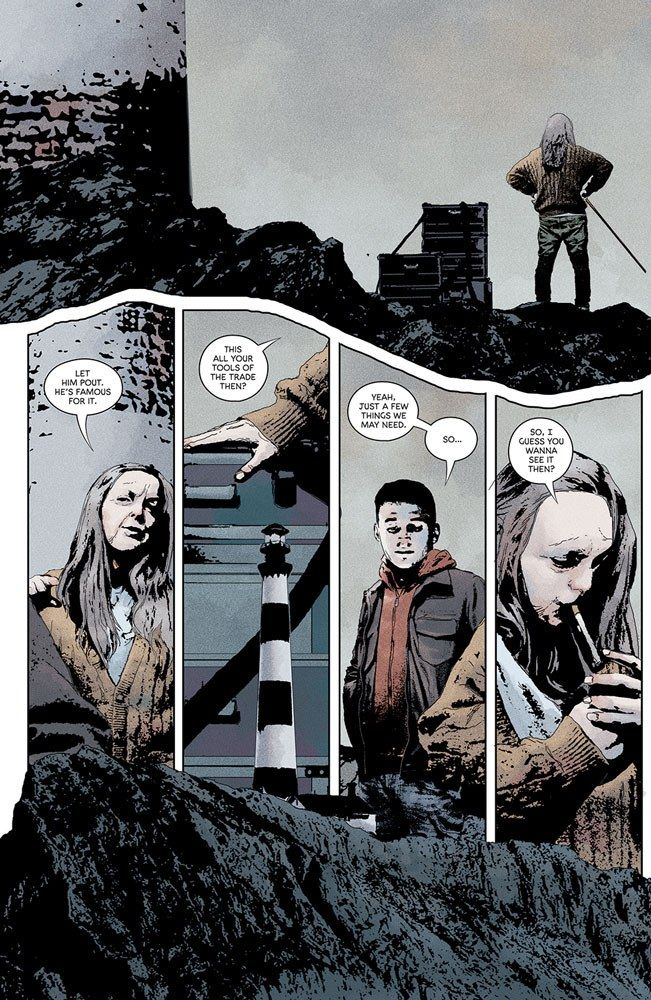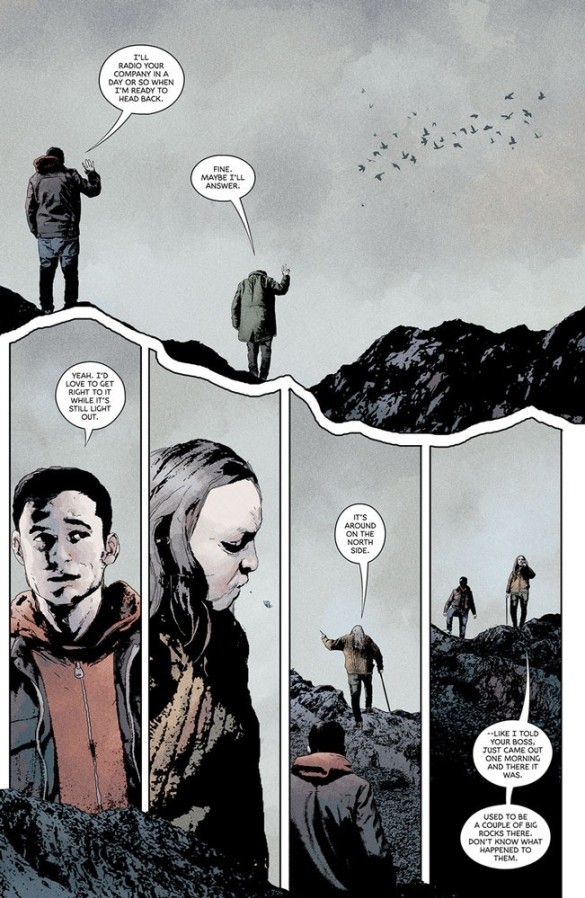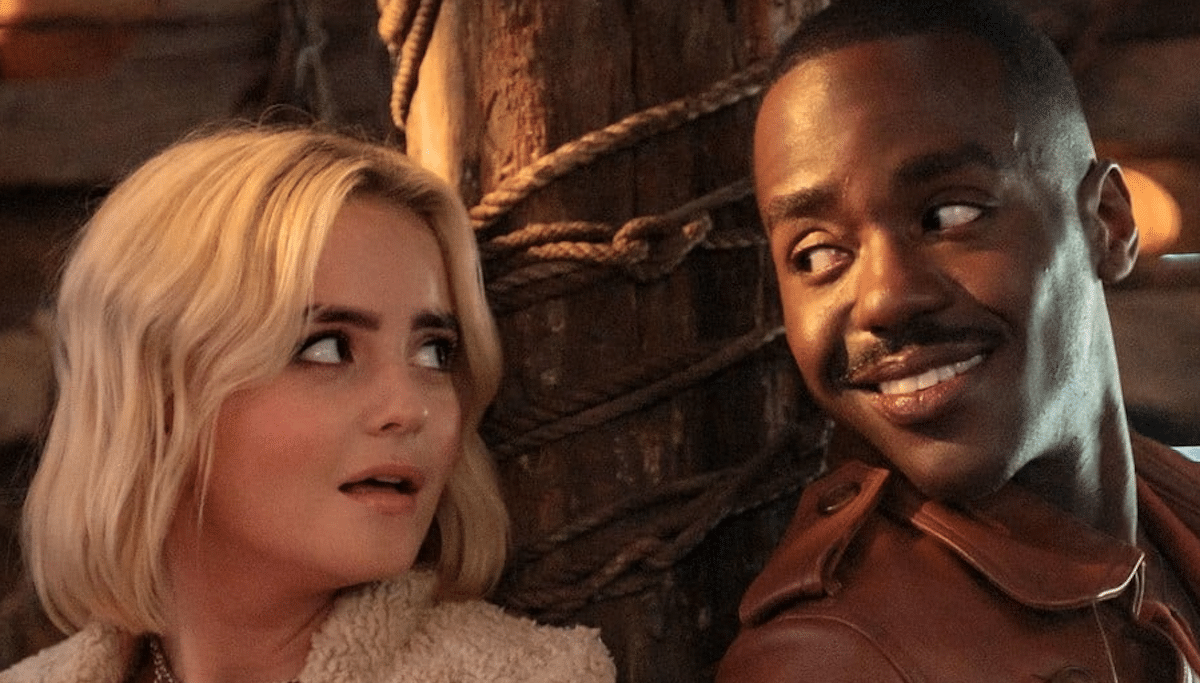 The Bone Orchard Mythos: The Passageway
The Bone Orchard Mythos: The Passageway
Script: Jeff Lemire
Art: Andrea Sorrentino
Colors: Dave Stewart
Letters: Steve Wands
Publisher: Image Comics
There’s a particular brand of indie/art house horror that’s characterized by stories that are slow paced, atmospheric, and dread-filled, preferring to inch towards their scares in a methodical way rather than open with them. It’s quite popular among the indie crowd, and its standing in contemporary horror can be largely attributed to A24, the company behind movies like Midsommar, The Green Knight, Men, and The VVitch.
Jeff Lemire and Andrea Sorrentino’s new Image graphic novel, The Bone Orchard Mythos: The Passageway, is like the comic book version of an A24 movie. It’s a good one at that, with a story that opens doors into future horrors without compromising its ability to tell a standalone story.
The Passageway follows Canadian geologist John Reed as he travels to a lonely lighthouse on a small island to investigate a hole in the ground that seems to be bottomless. The only person on the island, an older woman named Sally, follows John around to show him the hole and to fill him in on any strange happenings concerning it. Just who this mysterious old woman is and why the island seems to be harboring this weird phenomenon is where the story finds its path towards the creation of a mythos.
Whatever lies in the depths of that hole in the ground is bound to be the source of any future horror that carries the Bone Orchard name. Without spoiling much, readers get a glimpse of the things down below, and Andrea Sorrentino’s art goes lengths to make sure the visuals related to them are unsettling while also drawing questions about their origins.
Lemire’s script takes its time getting to the elements that will build up to the larger mythos at play in subsequent books (of which there are several upcoming releases already planned, plus the FCBD one-shot titled “Prelude: Shadow Eater”). It tries to balance worldbuilding and myth-building with a personal story regarding loss and trauma from John the geologist’s point of view. The character has dark dreams about his mother and a potential tragedy that’s afflicting his memories of her. It’s all led to the development of a visible aversion to water in him, which makes his presence on the island a very reluctant and tense one.
This approach does help create a very strong, character-led narrative that tells a satisfying story from beginning to end. I did hope for a bit more in the mythos-building department, and what Lemire offers in terms of a new horror world does give readers a sense of what’s to come, but given that this is potentially the first Bone Orchard book readers will read (unless they picked up the FCBD book), it would’ve done well to shed more light into the things that will carry over into the following books. It’s a great standalone story, but it is light on mythos.
The book is a great example of atmospheric horror done right, though. A lot of it is owed to Sorrentino’s art. It’s been a staple of his, thus far, to play with panel structures and sequencing to produce a disorienting sense of storytelling. Conversations between John and Sally, for instance, go from establishing shots that prioritize body language and subtle facial expressions to smaller panels that focus on specific gestures or details that reveal more about each character, no matter how inconsequential you might think they are.
Close reading is a reward unto itself because of this and I recommend taking your time with it, as it makes a second readthrough reveal a few more secrets hiding in the margins. Dave Stewart’s colors, which go from dreary grays for the lighthouse scenes to muted blues for certain dream and hallucination sequences, help balance the story’s more realistic visuals with its more dream-like ones.
Stewart encodes the horror aspects with colors that make the supernatural elements come off as imbued with a dark mysticism that houses eons of terrors. Steve Wands’ lettering adds to the atmosphere by the clever use of sound effects that often bleed from the source as if they’re natural extensions of the things that produce them. A bird’s ‘KAW’ can be confused with an actual illustration of a bird, for instance. Again, close reading reveals more about the mechanics at work, all of which deepen the dread that permeates throughout the story.
The Bone Orchard Mythos: The Passageway has some very compelling ideas at work, and they point to the rise of a whole body of work that can only get more terrifying as new books get released. The geologist’s story reaches a satisfying conclusion that doesn’t fall into the trappings of continuity or forced cliffhangers, and the base for an expansive supernatural universe is given a compelling introduction. That said, more could’ve been established from this first foray into the mythos (not counting the FCBD comic that came out before The Passageway). A few additional building blocks would’ve gone a long way in setting the course towards something with a better sense of mystery to it. As it stands, the Bone Orchard mythos is more a question than a concept, but it’s one that more than justifies the search for answers.
Published by Image Comics, The Bone Orchard Mythos: The Passageway is out in stores next week.


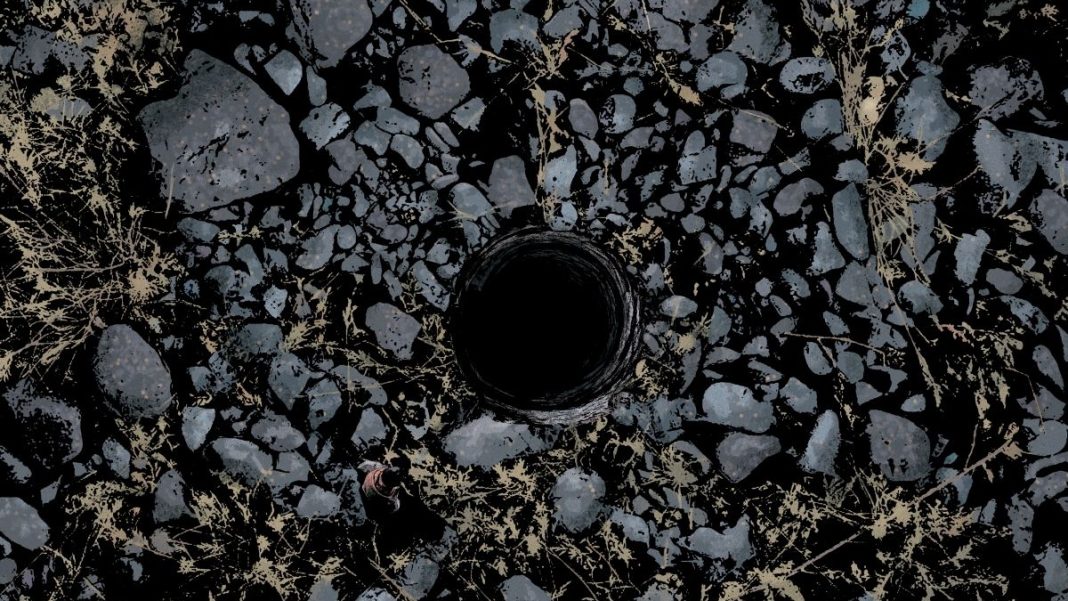
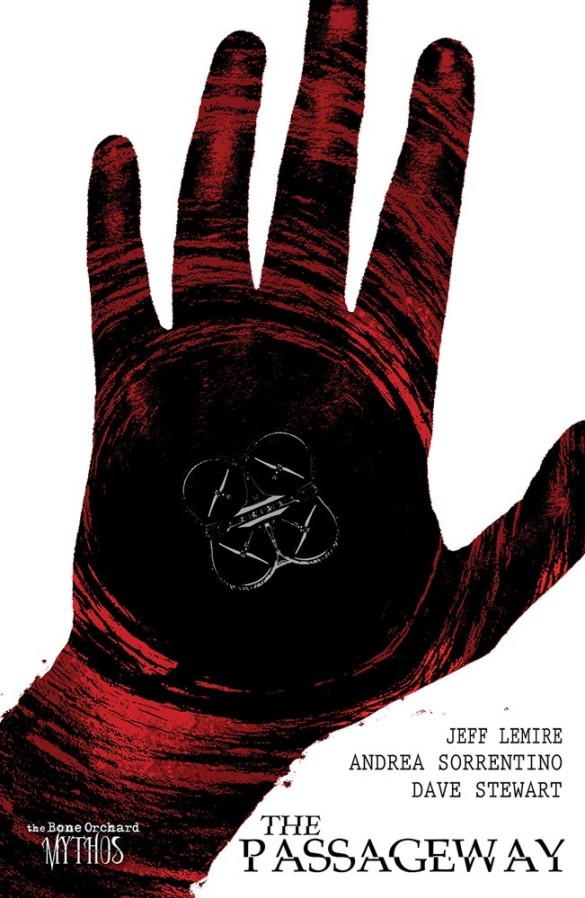 The Bone Orchard Mythos: The Passageway
The Bone Orchard Mythos: The Passageway